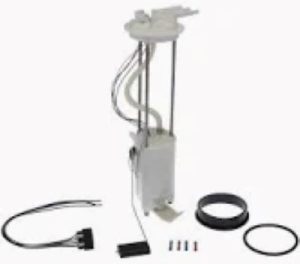A dual fuel pump system, as its name suggests, involves a two-part fuel pumpp, which work together to deliver an improved range of fuellines to the engine in question — typically those impressively-outfitted high-performance or otherwise modified cars. This setup has been created to satisfy the higher fuel supply requirements, which may be too much for a single pump. A standard fuel pump system delivers between 100 and 150 liters per hour (LPH), whereas the combined flow rate of a dual fuel pump systems has to be in excess of 500 LPH. The second pump serves to supply controlled, consistent fuel flow in extreme applications like racing or heavy-duty towing, where proper fuel pressure can be the difference between peak performance and catastrophic engine damage.
In a dual fuel pump system, the pumps run together or in a staged sequence depending on what the vehicle needs to meet its fuel requirements. This means that, for instance,only one of the pumps would be in use during low engine speed situations as to avoid an excess flow of fuel unnecessarily and to save energy. When operating at higher speeds, or with full throttle, the second pump comes into play to provide additional fuel flow and therefore create enough pressure throughout each injector's cycle (between 40 and 100 PSI) for optimal engine performance. Even a 10% drop can lead to issues like engine misfires or stalling, and the reduction in horsepower.
A separate dual fuel pump system is often advantageous for turbocharged or supercharged engines which need higher flows of fuel at considerable measure pressure. Take for example a high output vehicle that comes with a double pump system: if the car operates at full tilt and the fuel continues to flow at a steady rate, then there would be no need for gas starvation. For competitive racing, dual fuel pump systems are a must, as they help deliver the necessary fuel to an engine that's making north of 600 horsepower.

Dual pump systems are more expensive than single pump systems to install You're looking at anywhere between $500 and $1,000 for one of these double dosing setups, depending on the brand and the fuel flow demands. However, it could inject as much as 25 percent more power into the engine depending on other modifications made alongside the investment. It also lessens the chance that a single fuel pump will fail under heavy load and consequently has helped extend the life of fuel delivery components by splitting the work between two pumps.
And even if two pumps aren't mandatory, they can be a part of an overall fueling strategy for vehicles that operate in heavy-duty conditions. For instance, dual pumps are perfect for off-road trucks or vehicles that tow heavy loads regularly since these conditions force the engine and fuel system to operate at their maximum levels. In these situations, a lone fuel pump may get too hot or tear up sooner than expected; its 150,000-mile life could be cut short to as little as 80,000 miles.
Click here Fuel Pump to explore dual Fuel Pump systems in greater detail and learn about their benefits